
The Outlander is a combination of fantasy, action, and romance—and atmospheric Scotland is its perfect setting. The year is 1946, and Claire Randall, a married nurse during World War II, is transported back to Scotland in the year 1743. There (and then) she meets a dashing highland warrior, Jamie Fraser. She gets mixed up in Jacobite uprisings and falls in love with the audacious Jamie.
The main element in good storytelling is conflict. A strong woman who is in love with a man that lived two centuries before her own present? Yes, there’s galloping conflict that makes for a marvelous tale imbued with Scottish Gaelic. Most of the series is shot in Scotland, and every site is worthy of a glorious story, well-told.
For any devotee of this extraordinary series, travelling to Scotland is truly a remarkable journey of amazing pleasure and joy.
Interested in exploring the real-life locations of Outlander during a trip to Scotland? Discover our 8-Night Outlander tour.
Here are our Top Ten Outlander Film Locations.
Kinloch Rannoch and Rannoch Moor (Craig na Dun)
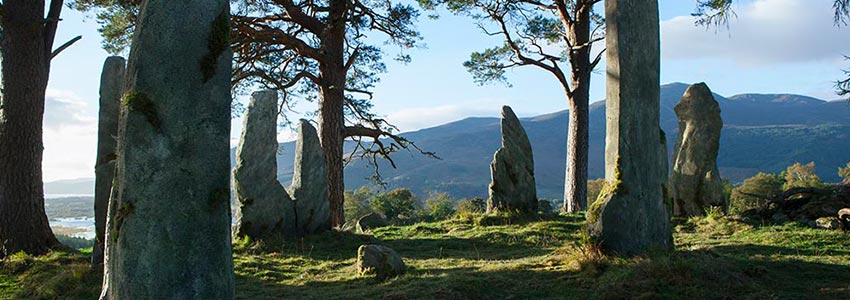
The engine of the story starts here with the stone circle that sent Claire back to 1743. The inspiration for the standing stones came from the Callanish Stone Circle on the Isle of Lewis, which was used for rituals during the Bronze Age. The exact hill where the stones are located in the dramatic series is just off the road near Kinloch Rannoch. Pull over and walk among them.
Doune Castle (Castle Leoch)
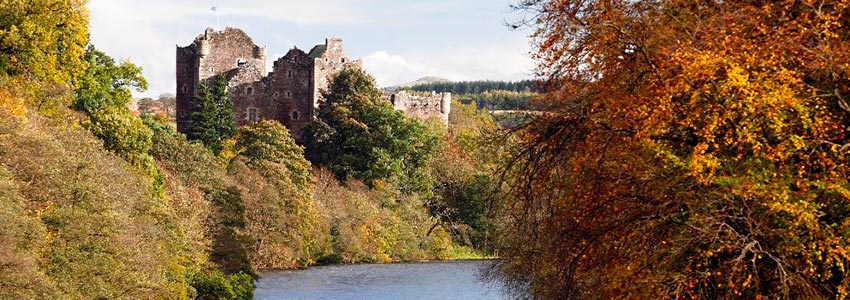
Doune Castle was built in the late 13th century, almost certainly damaged during the Scottish Wars of Independence, and then rebuilt by Robert Stewart, Duke of Albany, in the late 14th century. Close to the geographic center of Scotland, and only five miles from Stirling Castle, it was of immense importance. Doune Castle has survived, relatively unchanged and complete. In the Outlander, we know it as Castle Leoch.
Midhope Castle (Lallybroch)
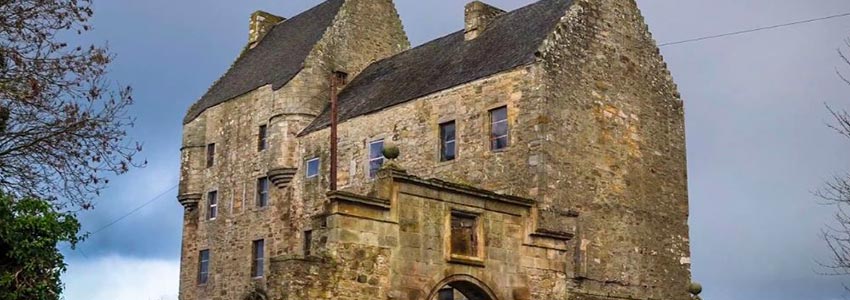
Midhope is a 16th century tower house that rises up in the outskirts of magnificent Edinburgh on the Hopetoun Estate. The elaborate gateway on the north side of the courtyard is the view that Lallybroch fans know quite well. If you go, wander around the property, and let your imagination fly. (The castle itself is not safe for visitors.) The Hopetoun Estate includes Hopetoun House, otherwise known as Bellhurst Manor, the Duke of Sandringham’s estate.
Linlithgow Palace (Wentworth Prison)
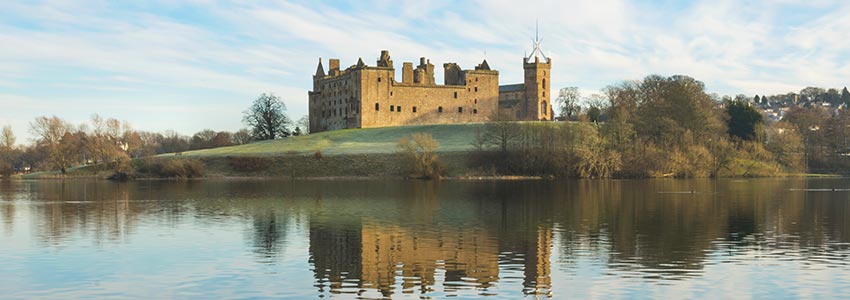
On the road between Edinburgh and Stirling is Linlithgow Palace, birthplace of Mary, Queen of Scots. The palace continued in use through the second Jacobite war, until Bonnie Prince Charlie was driven out by the Duke of Cumberland, who set the palace ablaze when he left. After the fire, centuries of fortifications resulted in an imposing edifice that stands in for the impenetrable Wentworth Prison.
Aberdour Castle (Sainte Anne de Beaupré Monastery)
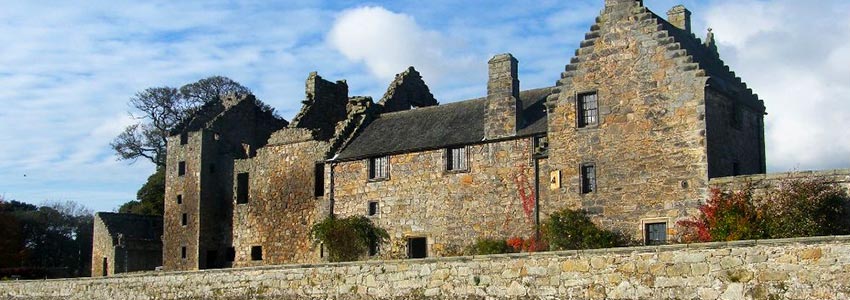
Aberdour Castle is one of the oldest castles in Scotland, dating from the 12th century. It was associated with Scottish nobility for centuries, including legendary Robert the Bruce, and Mary, Queen of Scots. It was put into service as a garrison during the Jacobite Uprising of 1715. The Old Kitchen and the Long Gallery, from the 17th century, are seen in The Outlanders.
Falkland (1940’s Inverness)
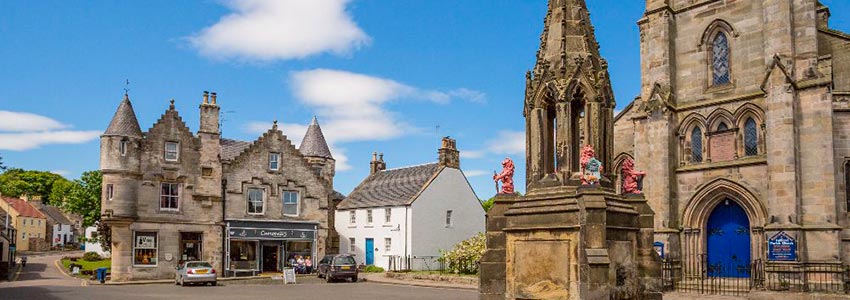
In Fife, at the foot of the Lomond Mountains, lies the heart-breakingly beautiful village of Falkland, otherwise known as the honeymoon destination on Outlander. Falkland Palace was the summer hunting lodge for the Stewarts from the mid-16th to the mid-17th century, then abandoned after a fire in 1654. Restoration began, and by 1970 the township of Falkland was designated as Scotland’s first conservation area.
Culross (Cransemuir)

On the north shore of the Firth of Forth, and just a bit more inland than Blackness Castle, is Culross. The Royal Burgh of Culross is a National Trust of Scotland property that is the most complete example of a 17th-18th century burgh in the country. We know it as the town of Cranesmuir in Outlander.
Dean Castle (Beaufort Estate)
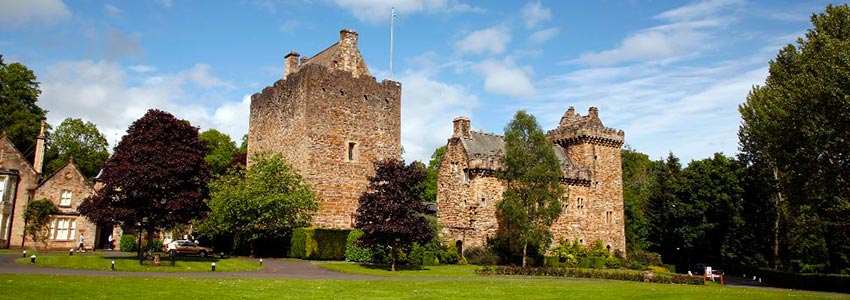
Jamie Fraser’s grandfather, known as Lord Lovat, the man we love to hate, made his home in Beaufort Castle. He would not leave it when Jamie asked for men to support Bonnie Prince Charlie. The very home Lord Lovat refused to leave is actually west Scotland’s Dean Castle, located in Kilmarnock. Robert the Bruce gave the lands to Robert Boyd for his service in the Scottish Wars of Independence. The Boyd family held the land and castle for centuries, up until the time that Lord Boyd was executed for supporting Bonnie Prince Charlie in the Second Jacobite War.
Deanston Distillery (Jarrod’s wine warehouse in Le Harve)
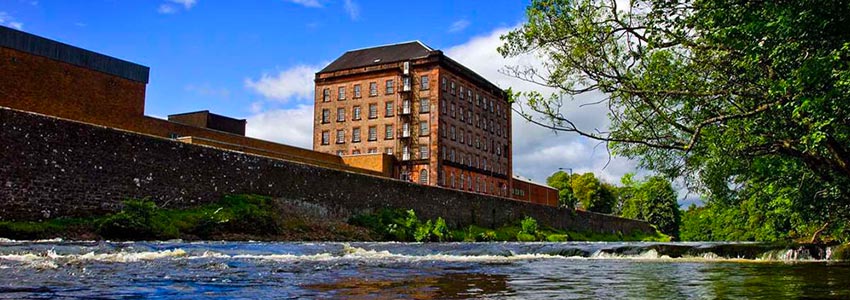
On the River Teith, near Doune Castle and Loch Lomond, is the Deanston Distillery. The distillery began life in 1785 as a cotton gin, but changed to whiskey production in 1965. The waters from the River Teith not only produce a superior whiskey, they also provide the hydroelectric power that’s used by the distillery. Their warehouse, filled with whiskey, stands in for Jamie’s cousin’s wine warehouse in France.
The Outlander has a wealth of other sites filmed in Scotland. Tulloch Ghru, for instance, is the place Claire first meets Jamie after being rescued from Black Jack Randall. Glencourse Old Kirk is where Jamie and Claire were wed—it was here that their grand adventure truly begins. Culloden Battlefield, where the pair parts, has become a pilgrimage for fans. And Edinburgh’s Royal Mile, the heart of Edinburgh’s Old Town, is where the lovers are reunited.
For any devotee of this extraordinary series, travelling to Scotland is truly a remarkable journey of amazing pleasure and joy.
THANK YOU TO OUR FRIENDS AT AUTHENTIC VACATIONS FOR THIS INFORMATION

